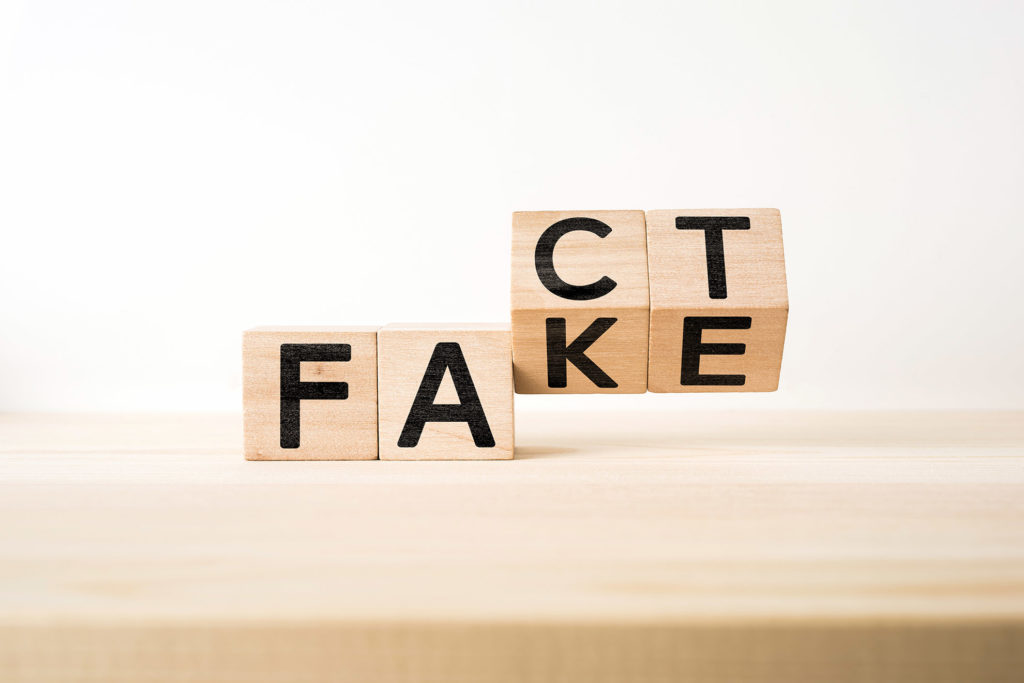
Sharing might not necessarily be caring?
**可以在下方查看本文章的华文版本
Malaysia has entered the third phase of the Movement Control Order (MCO) which has been imposed by the government since 18 March 2020. During this period, most Malaysians are ‘locked’ up at home and busily updating themselves with latest news through the world wide web and social media platforms.
Undoubtedly, ‘fake’ news, just like Covid-19, managed to creep in unannounced and spread virally to individuals, both young and old. But what is fake news actually?
The term “fake news” can be described as a false and/or fabricated news. Fake news is a lie invented by the writer with the aim to disseminate that lie to create fear, worry, discomfort or distress. Fake news could even potentially cause harm to persons, country and the world. The trophy for success? Perhaps the sense of achievement at the expense of the general public.
There are enormous impacts on spreading fake news. Chaos erupted when fake news on the current trending topic, Covid-19, was spread among Malaysians causing massive panic-buying and mass movement prior to the start of the MCO. Various ‘reports’ on how to eradicate Covid-19 were spread, causing more harm than good to those who executed the methods mentioned in the reports.
Granted, the author should be responsible for creating fake news, but what about the person, who spread the information to his or her family, friends and relatives?
What is the consequence of sharing or forwarding fake news on social media platforms?
Despite the Anti-Fake News Act, a law to criminalise “fake news” has been repealed in 2019 it does not mean that the person(s), who spread the information is safe. The police and relevant authority may use other law to take legal action against those who spread the fake news.
According to the news posted by the New Straits Times on 14 April 2020, the police have opened a total of 217 investigation papers on Covid-19-related fake news, with 162 of them still under investigation. Senior Minister (Security Cluster) Datuk Seri Ismail Sabri Yaakob said 23 people had been charged in court for publishing fake news so far.
So what laws are there?
Those who are suspected for creating and/or spreading fake news could be charged under Section 233 of the Communications and Multimedia Act 1998, in which, once convicted, a maximum fine of RM50,000 or imprisonment for up to one year, or both.
An individual could also be charged under Section 505(b) of the Penal Code, in which if found guilty, shall be punished with imprisonment which may extend to two years or with fine or with both.
I wrote it but it’s not me who post it!
Section 114A of the Evidence Act 1950 enables a person, who created the fake news to be liable for publishing the content if the person’s ‘name, photograph or pseudonym appears on any publication depicting himself as the owner, host, administrator, editor or sub-editor’.
However, you may argue that you did not published the fake news if you are able to furnish cogent evidence that the account was being used by a third party or being ‘hacked’ (but you may still be charged for creating the fake news under the abovementioned laws).
How to safeguard yourself?
In order to assist the public to identify the fake news, the Malaysian Communications and Multimedia Commission (MCMC) has launched the “sebenarnya.my” portal to allow the public to “check on the authenticity of news spread through social websites.”- SEBENARNYA.MY Portal Launched for Checking Validity of News, The Star (Mar, 16, 2017)
Besides, the portal is available as a smartphone app. The portal remains active and publishes various latest news in relation to Covid-19 which worth the visit of the public. – https://sebenarnya.my/ (last visited on 16 April 2020)
As a rule of thumb, if you are unsure of the content, don’t post.
By: Joanne Leong and Lee Su Ting
DISCLAIMER: This article is for general information only and should not be relied upon as legal advice and/or legal opinion. Messrs Yeoh & Joanne accepts no liability for any loss which may arise from reliance on the information contained in this article.
分享不一定是一种关心?
马来西亚已经进入政府自2020年3月18日起实施的《行动管制令》(Movement Control Order)的第三阶段。在此期间,大多数马来西亚人被“锁”在家里,忙于通过万维网和社交媒体平台给自己更新最新消息。
无疑的,“虚假新闻”就像Covid-19病毒一样,设法在未知的情况下悄悄进入并传播,无论是在年轻人还是老年人当中。但是什么是虚假新闻呢?
“虚假新闻”一词可以被描述为虚假和/或捏造的新闻。虚假新闻是作者编造的谎言,目的是散布谎言,制造恐惧、担忧、不适或痛苦。虚假新闻甚至可能对个人、国家和世界造成伤害。成功的奖杯?也许是以牺牲公众利益为代价的成就感。
传播虚假新闻可以造成极大的影响或后果。当关于当前热门话题Covid-19的虚假新闻在马来西亚人之间传播时,造成了各种混乱,包括在行动管制令开始前严重的恐慌性抢购和大量人群返乡之类的无秩序状态。此外,关于如何根除Covid-19的各种“报告”被广泛传播开来后,对于那些相信并使用该“报告”中提及的方法来尝试治疗或预防Covid-19病毒的人民更造成了弊大于利的伤害。
确实,作者应该对制造虚假新闻负责,但是那位把虚假新闻传播给他或她的家人、朋友和亲戚的人呢?
在社交媒体平台上分享或转发虚假新闻的后果是什么?
尽管《2018年反假新闻法令》,一项将“虚假新闻”定罪的法令已于2019年被废除,但这并不意味着传播虚假新闻的人不会受收到法律的追究。警方和有关当局可以利用其他法律对散布虚假新闻的人采取法律行动。
根据《新海峡时报》(New Straits Times)在2020年4月14日发布的消息,警方已就与Covid-19有关的虚假新闻共展开217项调查,其中162宗仍在调查中。安全部高级部长拿督斯里·伊斯梅尔·萨布里·雅各布说,有23人已在法庭上被提控发布虚假新闻。
所以是有什么法律呢?
根据《1998年通讯与多媒体法令》第233条文,任何人涉嫌制造和/或传播虚假新闻将被起诉,一旦定罪,最高罚款五万令吉或监禁一年以下,或两者兼施。
警方还可以根据《刑事法典》第505(b)条文对个人提出指控,根据该条文,一旦定罪,将被处以两年以下监禁或罚款,或两者兼施。
我写的,但不是我发的!
《1950年证据法令》第114A条文规定,当一个人的 “姓名、照片或笔名出现在任何将自己描述为所有者、主持人、管理者、编辑或副编辑的出版物上”, 他/她将需要对发布该内容的行为负责。
然而,如果你能提供确凿的证据证明该账户被第三方使用或被“黑客”攻击,你可能可以辩称你没有发布该虚假新闻(但根据上述法律,你仍可能因制造虚假新闻而被起诉)。
如何保护自己?
为了帮助公众识别假新闻,马来西亚通讯与多媒体委员会(Malaysian Communications And Multimedia Commission) 推出了“sebenarnya.my”网站,允许公众“检查通过社交网站传播的新闻的真实性” – 取自于《星报》于2017年3月14日的”SEBENARNYA.MY Portal Launched for Checking Validity of News”报道
此外,该网站也为设有智能手机应用程序以便公众方便使用。该网站仍然活跃,也发布了与Covid-19有关的各种最新新闻,值得公众浏览。- https://sebenarnya.my/(最后浏览日期为2020年4月16日)
一般来说,如果不确定的内容,不要发帖。
文章来自于:律师事务所合伙人梁佩欣律师(Joanne Leong)与李淑婷律师(Lee Su Ting)
免责声明:本文仅供参考,不应作为法律建议和/或法律意见。Yeoh & Joanne律师事务所不会承担因依赖本文所含信息而产生的任何损失的责任。
coronavirus covid19 Fake news section 114A evidence act 1950 section 233 communications and multimedia act 1998
- by admin
- on April 17, 2020

